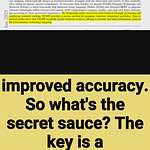Make LLMs read graphs by converting them into meaningful text sequences
📚 https://arxiv.org/abs/2410.19494
🎯 Original Problem:
LLMs can't directly process graph data as they only understand text. Converting graphs into sequences (linearization) while preserving structural information remains an unsolved challenge.
-----
🔧 Solution in this Paper:
• Developed graph linearization methods using:
- Graph centrality (PageRank and degree)
- Graph degeneracy (k-core decomposition)
- Node relabeling schemes
• Created edge ordering strategies based on node importance
• Applied node relabeling to maintain global alignment
• Tested on synthetic dataset with 3000 graphs using Llama 3 Instruct 8B
-----
💡 Key Insights:
• Graphs need local dependency and global alignment properties for LLMs to process them effectively
• Centrality-based methods consistently outperform random baselines
• Node relabeling shows mixed effects across different tasks
• Edge ordering significantly impacts LLM's graph understanding
-----
📊 Results:
• Node Counting: Degree-based method achieved 62.28% accuracy
• Max Degree: Degree centrality reached 30.89% accuracy
• Motif Classification: PageRank method hit 47.27% accuracy
• All proposed methods consistently outperformed random baselines










